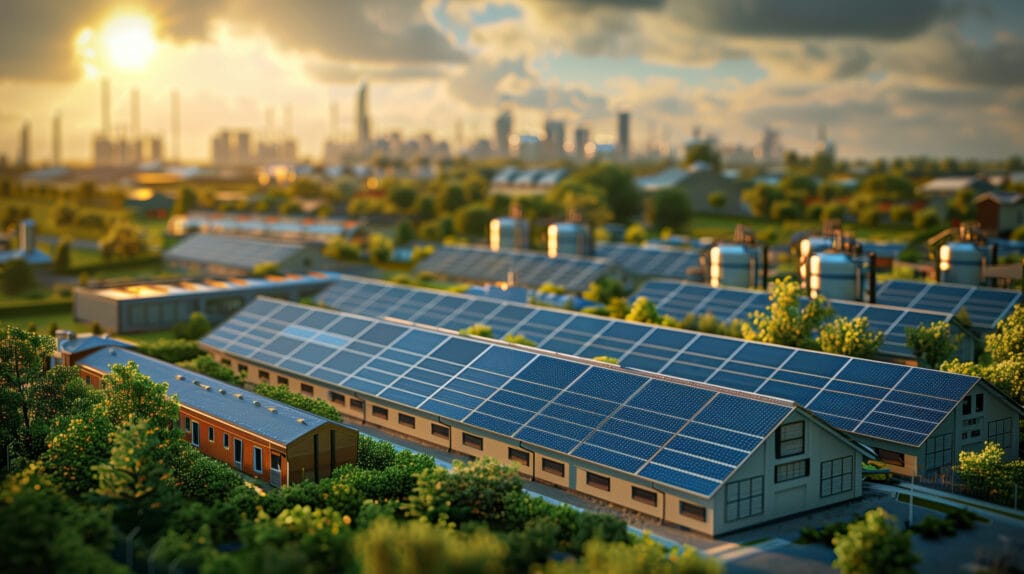Introduction: Understanding Climate Change and Its Global Impact
Climate change is one of the most critical challenges we face today. It refers to long-term shifts in temperatures and weather patterns, primarily caused by human activities such as burning fossil fuels, deforestation, and industrial processes. As a result, we are witnessing drastic changes in our environment, including rising global temperatures, melting ice caps, and increasing frequency of extreme weather events like hurricanes and droughts.
This phenomenon poses severe risks not only to our planet’s ecosystems but also to human health, agriculture, and economies. For instance, coastal communities are at heightened risk from rising sea levels, while farmers face challenges from unpredictable weather patterns. Thus, addressing climate change is not just an environmental issue; it is a societal imperative that requires urgent action.
The Role of Technology in Combating Climate Change
Fortunately, technology is emerging as a powerful ally in the fight against climate change. It offers innovative solutions that can reduce greenhouse gas emissions, promote sustainability, and enhance our ability to adapt to changing conditions. From renewable energy sources to data analytics, technology is reshaping how we approach environmental challenges.
As we delve deeper, we will explore various technological innovations and their significant contributions to mitigating the effects of climate change. By harnessing the power of these advancements, we can pave the way for a more sustainable future.
Innovative Renewable Energy Solutions to Address Climate Change
Renewable energy technologies stand at the forefront of our battle against climate change. Unlike fossil fuels, which release harmful emissions when burned, renewable sources like solar, wind, and hydroelectric power produce clean energy.
Solar Energy
Solar panels have become increasingly efficient and affordable, allowing households and businesses to harness the sun’s energy. These systems can significantly reduce reliance on coal and gas, thus cutting down carbon emissions. Additionally, advances in solar technology, such as solar roofing and solar farms, are expanding the possibilities for energy generation.

Wind Energy
Wind turbines are another vital renewable energy source. They convert kinetic energy from wind into electricity, which can power homes, schools, and industries. Offshore wind farms, in particular, are becoming more popular due to their ability to generate substantial amounts of energy without occupying land space.
Hydropower
Hydropower harnesses the energy of flowing water to generate electricity. It is one of the oldest forms of renewable energy and continues to be a significant contributor to global energy supply. Innovative technologies are enhancing the efficiency of hydroelectric plants and reducing their ecological impact.
By investing in these renewable energy sources, we not only reduce greenhouse gas emissions but also create jobs and stimulate economic growth. Furthermore, these technologies promote energy independence, which is crucial for national security and economic stability.
Smart Technologies: How AI is Revolutionizing Climate Change Mitigation
Artificial Intelligence (AI) is transforming how we tackle climate change. It enables us to analyze vast amounts of data quickly and accurately, leading to more informed decisions. AI applications in climate change mitigation include:
Energy Management
AI systems can optimize energy use in buildings by learning patterns of consumption and adjusting heating, cooling, and lighting accordingly. This smart energy management reduces waste and lowers utility bills while contributing to lower emissions.
Predictive Analytics
By using predictive analytics, AI can model climate scenarios and forecast future environmental conditions. This information is invaluable for governments and organizations planning climate strategies. For instance, AI can predict droughts, allowing farmers to adjust their planting schedules and conserve water.
Carbon Tracking
AI can also assist in tracking carbon emissions across various industries. This capability helps companies measure their carbon footprints and identify areas for improvement. By holding businesses accountable, AI promotes more sustainable practices.
Climate Change Monitoring: The Importance of Data and Analytics
Monitoring climate change is crucial for understanding its impacts and developing effective responses. Technology plays a pivotal role in this process by facilitating data collection and analysis.
Remote Sensing
Remote sensing technologies, including satellites and drones, collect real-time data on environmental changes. These tools help scientists monitor deforestation, ice melt, and other critical indicators of climate change. For instance, satellites can track changes in polar ice caps, providing valuable insights into global warming.
Climate Modeling
Data analytics enables researchers to build climate models that simulate various scenarios. These models help us understand potential future conditions and assess the effectiveness of different climate policies. By simulating the impacts of greenhouse gas emissions, we can make more informed decisions regarding climate action.
Public Awareness
Accessible data can raise public awareness about climate change. Organizations can use data visualizations and reports to educate communities about local environmental issues. This awareness encourages individuals to adopt sustainable practices, such as reducing energy consumption and supporting renewable energy initiatives.

Sustainable Agriculture Technologies: Fighting Climate Change from the Ground Up
Agriculture is both a contributor to and a victim of climate change. Innovative technologies in this sector are essential for developing sustainable practices that mitigate environmental impacts.
Precision Farming
Precision farming uses data analytics to optimize crop production. By analyzing soil conditions, weather patterns, and crop health, farmers can make informed decisions about planting, watering, and fertilizing. This approach reduces resource waste and enhances yield while minimizing environmental impacts.
Vertical Farming
Vertical farming is an innovative solution that addresses space constraints and resource efficiency. By growing crops in vertically stacked layers, these farms use less land and water than traditional farming methods. Moreover, they can operate in urban areas, reducing transportation emissions associated with food distribution.
Biotechnology
Biotechnology is another promising field in sustainable agriculture. Genetically modified organisms (GMOs) can be engineered to withstand harsh environmental conditions, such as drought or pests. By increasing crop resilience, we can reduce the need for chemical fertilizers and pesticides, ultimately lowering carbon emissions.
Electric Vehicles: Reducing Carbon Footprint in the Face of Climate Change
Transportation is a significant source of greenhouse gas emissions, making it a key area for climate change mitigation. Electric vehicles (EVs) offer a cleaner alternative to traditional gasoline-powered cars.
Benefits of Electric Vehicles
EVs produce zero tailpipe emissions, significantly reducing air pollution and carbon footprints. Moreover, they can be powered by renewable energy sources, making them even more sustainable. As battery technology improves, the range and affordability of electric vehicles continue to increase, making them accessible to more consumers.
Infrastructure Development
To support the growth of electric vehicles, infrastructure such as charging stations is essential. Many cities are investing in this infrastructure, making it easier for individuals to transition to EVs. Furthermore, innovations like fast-charging technology reduce the time required to charge vehicles, enhancing convenience for users.
Carbon Capture and Storage: Technology’s Role in Climate Change Solutions
Carbon capture and storage (CCS) technology is a crucial innovation in the fight against climate change. This process captures carbon dioxide emissions from industrial sources and stores them underground, preventing them from entering the atmosphere.
How Carbon Capture Works
CCS involves three main steps: capturing carbon dioxide, transporting it to a storage site, and injecting it into geological formations. This technology has the potential to significantly reduce emissions from power plants and industrial facilities, making it an essential tool for achieving climate goals.
Challenges and Opportunities
Despite its promise, CCS faces challenges, including high costs and the need for extensive infrastructure. However, ongoing research and development are driving innovations that could make this technology more efficient and affordable. As investment in CCS increases, its potential to combat climate change becomes more evident.
The Impact of Blockchain Technology on Climate Change Initiatives
Blockchain technology is gaining traction as a tool for climate change initiatives. This decentralized technology offers transparency, security, and traceability, making it ideal for tracking carbon credits and sustainable practices.
Carbon Credit Trading
Blockchain can facilitate carbon credit trading by providing a secure platform for buyers and sellers. This transparency ensures that carbon credits are accurately accounted for, promoting fair trading practices. By incentivizing businesses to reduce emissions, blockchain can drive meaningful change.
Supply Chain Transparency
Moreover, blockchain enhances supply chain transparency, allowing consumers to trace the origins of products. This capability encourages companies to adopt sustainable practices and reduces the environmental impact of production processes. As consumers demand more ethical products, businesses will be motivated to improve their sustainability efforts.
Green Building Technologies: Sustainable Solutions for Climate Change
The construction industry is another significant contributor to greenhouse gas emissions. However, green building technologies are paving the way for sustainable construction practices.
Energy-Efficient Design
Energy-efficient building designs focus on minimizing energy consumption. Techniques such as passive solar design, efficient insulation, and natural ventilation reduce reliance on heating and cooling systems. By optimizing energy use, these buildings significantly lower carbon emissions.
Sustainable Materials
The choice of materials is also crucial in green building. Sustainable materials, such as recycled steel and bamboo, reduce the environmental impact of construction. Additionally, innovative materials like self-healing concrete can extend the lifespan of structures, further promoting sustainability.
How Technology is Promoting Climate Change Awareness and Education
Awareness and education are critical components of climate change action. Technology plays a significant role in disseminating information and engaging communities.
Digital Platforms
Social media, websites, and mobile apps provide platforms for sharing climate-related information. These tools enable organizations to reach a broader audience and raise awareness about environmental issues. Engaging content, such as videos and infographics, can effectively communicate complex concepts.
Online Courses and Webinars
Moreover, online courses and webinars offer accessible education on climate change and sustainability. Individuals can learn about the science behind climate change, its impacts, and actionable solutions. By empowering communities with knowledge, we can foster a culture of sustainability and environmental stewardship.
Challenges and Limitations: The Role of Technology in Climate Change Action
While technology holds great promise in combating climate change, challenges and limitations must be addressed.
High Costs and Accessibility
Many technological solutions require significant financial investment, which can be a barrier for developing countries. Ensuring that all nations have access to sustainable technologies is crucial for global climate action.
Technological Limitations
Furthermore, some technologies are still in the development phase and may not be ready for widespread implementation. Continued research and innovation are necessary to improve the effectiveness and affordability of climate change solutions.
Public Acceptance
Public perception and acceptance of new technologies also play a significant role. Education and outreach efforts are essential to inform communities about the benefits of adopting sustainable practices and technologies.
Conclusion: The Future of Climate Change Mitigation Through Technology
In conclusion, the intersection of climate change and technology offers hope in our battle against this global crisis. Innovative renewable energy solutions, smart technologies like AI, sustainable agriculture practices, electric vehicles, carbon capture, and blockchain are just a few examples of how technology can drive positive change.
Moreover, increased awareness and education foster a culture of sustainability, empowering individuals and communities to take action. However, we must also recognize the challenges ahead, including financial barriers, technological limitations, and public acceptance.
Ultimately, collaboration among governments, businesses, and individuals will be essential for harnessing the full potential of technology in addressing climate change. By working together, we can create a sustainable future and protect our planet for generations to come.

